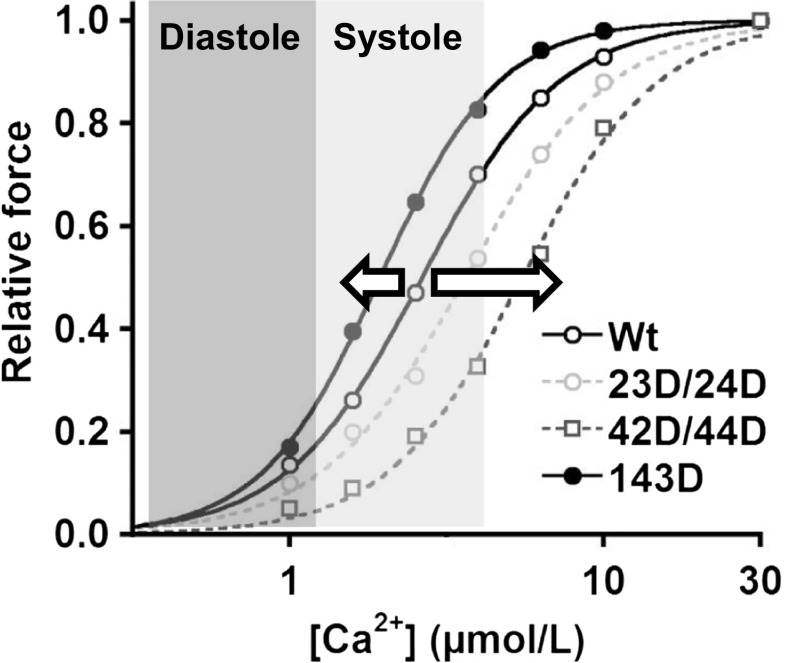Fig. 3.
Myofilament responses to phosphorylation of cTnI at Ser23/24, Ser42/44 and Thr143 . An example of myofilament force development at 2.2 μm sarcomere length at various [Ca2+] in human membrane-permeabilised cardiomyocytes in which endogenous troponin complex is exchanged with exogenous recombinant troponin complexes. Compared with unphosphorylated wild-type cTnI (Wt), Ca2+ sensitivity (EC50) increases after exchange with phosphorylated cTnI at Thr143 (143D) (arrow to the left). This may result in higher cardiomyocyte force development during systole (light grey: high intracellular Ca2+ concentrations) and may result in increased cardiac output during the systolic phase, while the enhanced Ca2+ sensitivity may impair relaxation of the heart muscle during diastole (dark grey: low intracellular Ca2+ concentrations). Phosphorylation at Ser23/24 (23D/24D) or at Ser42/44 (42D/44D) decreases myofilament Ca2+ sensitivity compared with Wt (arrow to the right). This may contribute to enhanced muscle relaxation, which is required for proper filling of the heart during diastole, however, may result in a decrease in cardiac output during the systolic phase

